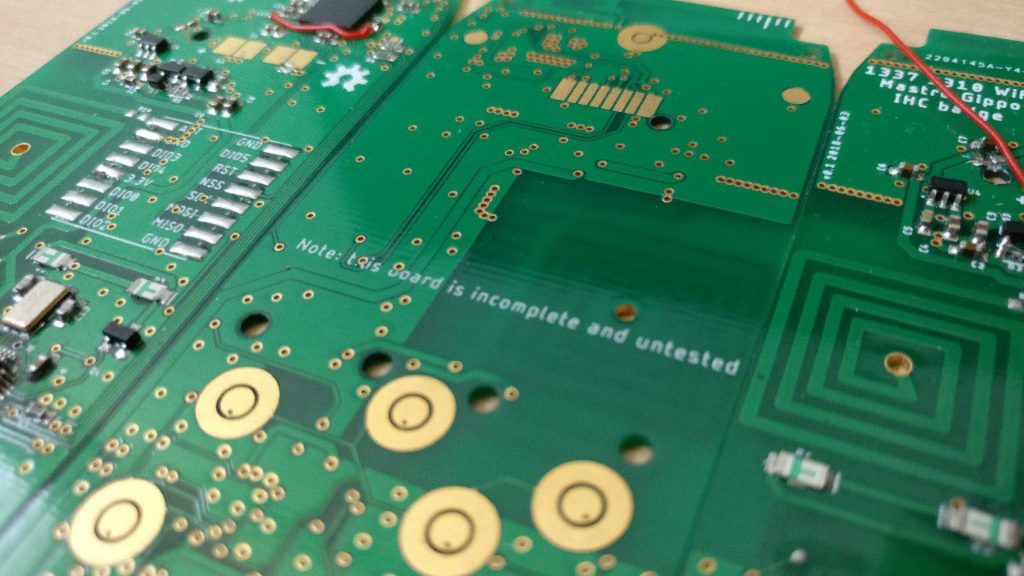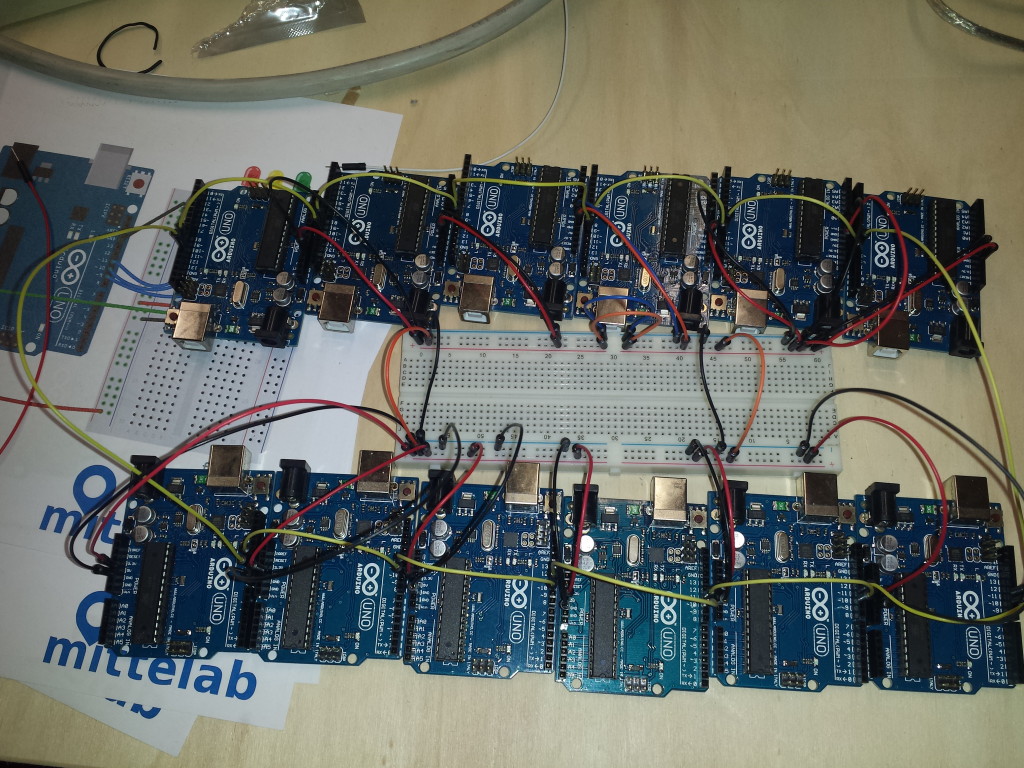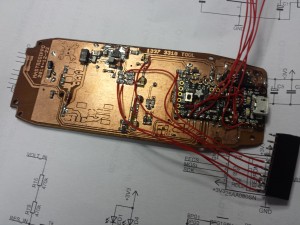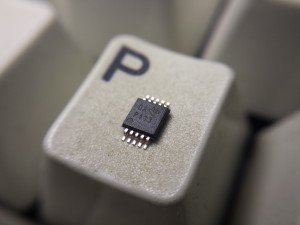 This post is part of a series about this badge
This post is part of a series about this badge
What goes into the design of a board like this? There’s a lot of choices to make when designing a circuit board, and I’ll try to tell you the story of how I went from the idea to the final design.
 This post is part of a series about this badge
This post is part of a series about this badge
What goes into the design of a board like this? There’s a lot of choices to make when designing a circuit board, and I’ll try to tell you the story of how I went from the idea to the final design.
I cannot explain my obsession with the Nokia 3310. This iconic device definitely marked my boyhood, and I loved messing around with it. After about 4 years, it’s time to revisit and upgrade my old project – and what better excuse to do it than making a conference badge?
 While I developed the Crunchtrack with the automotive field in mind, it became clear pretty soon that the board had a lot of potential in a lot of other applications. The very small board with a powerful MCU, a wide supply range, GSM, GPS and SD card is very flexible, so I bought it to the BattleHack Hackathon to see how far it could go. Continue reading Crunchtrack’s hacks
While I developed the Crunchtrack with the automotive field in mind, it became clear pretty soon that the board had a lot of potential in a lot of other applications. The very small board with a powerful MCU, a wide supply range, GSM, GPS and SD card is very flexible, so I bought it to the BattleHack Hackathon to see how far it could go. Continue reading Crunchtrack’s hacks
 This year’s Arduino day we left our hackerspace Crunchlab in the morning to spend the day with our friends from Trieste and help them in the opening of their hackerspace, the Mittelab. After an evening filled with Arduino and soldering workshops, I was looking at all the arduinos left from the workshop and had a dumb idea: let’s play a telephone game! So I connected all the arduinos together, loaded a simple sketch and started throwing characters at them!
This year’s Arduino day we left our hackerspace Crunchlab in the morning to spend the day with our friends from Trieste and help them in the opening of their hackerspace, the Mittelab. After an evening filled with Arduino and soldering workshops, I was looking at all the arduinos left from the workshop and had a dumb idea: let’s play a telephone game! So I connected all the arduinos together, loaded a simple sketch and started throwing characters at them!
The moment that every hacker has been waiting for has arrived!!! Today HackADay launched the HackADay Prize, a contest where the best product that can change the world will be awarded A FRIGGIN’ TRIP TO SPACE!
Last year I “lost”, well I wouldn’t call it losing as I scored an awesome t-shirt and got the chance to meet a lot of awesome people at the big event in Munich, but this year I’m in for the grand prize! And for that I must always be up to date with all the news about the contest, so I started to get my hands dirty and built this thing to print tweets from the HaD Prize account:
This years contest is all about green technology, so what better way to offset all that good will than printing all @hackadayprize tweets on paper?
Just kidding, I saved that printer from the dumpster and the paper I’m using would have gone to waste anyway; also, I was already using the back of the “discarded” paper to take notes! :)
I tried the ESP8266 modules as soon as they became available and made a few projects, but nothing to write HackADay about… Continue reading The HackADay Prize 2015
 This article is part of a larger project to build a multi-purpose board that can replace a Nokia 3310′s mainboard.
This article is part of a larger project to build a multi-purpose board that can replace a Nokia 3310′s mainboard.
Well, today I started testing the analog input circuitry. As you can see, I’m soldering wires directly from resistors to the connector. The casual observer may see this as being too lazy to route a proper connector on the PCB, but it’s really a very sophisticated way to relieve stress on the connector! :P
I also had to add a bodge flyback diode to the buzzer, as I forgot to include one… That’s the second error on the PCB: the other one is taking for granted that I could put two green LEDs in series. I’m too used to modern, super efficient LEDs, but since I’m reusing the original Nokia 12 years old LEDs, they need a bit more current and seem to have an higher forward voltage than the ones I use everyday.
 This article is part of a larger project to build a multi-purpose board that can replace a Nokia 3310′s mainboard.
This article is part of a larger project to build a multi-purpose board that can replace a Nokia 3310′s mainboard.
Designing a replacement PCB for the 3310 mainboard requires quite a bit of effort. The first thing I did was to remove all the components from a broken phone, to get a nice scan of the board:
 This article is part of a larger project to build a multi-purpose board that can replace a Nokia 3310′s mainboard.
This article is part of a larger project to build a multi-purpose board that can replace a Nokia 3310′s mainboard.
PGAs are quite common, but I don’t have one in my parts bin and I was curious about an idea I had for a while…
This article is part of a larger project to build a multi-purpose board that can replace a Nokia 3310’s mainboard.
A long time ago, (I felt like) I was the coolest kid on the block, with my heavily modified Nokia 3310. A thriving community existed with the purpose of reverse engineering Nokia DCT3 phone firmwares, creating from the simplest mods like changing a few bitmaps to writing a full alternative open source firmware, aka Project MADos. Yes, I was “cooking ROMs” before it was cool.
A few weeks ago I’ve had the great opportunity to attend the awesome Hacker Camp in Shenzhen, hosted by Ian Lesnet from DangerousPrototypes. I could say a lot about that incredible experience, so I’ll start by sharing an experiment I did to explore Shenzhen’s manufacturing ecosystem.